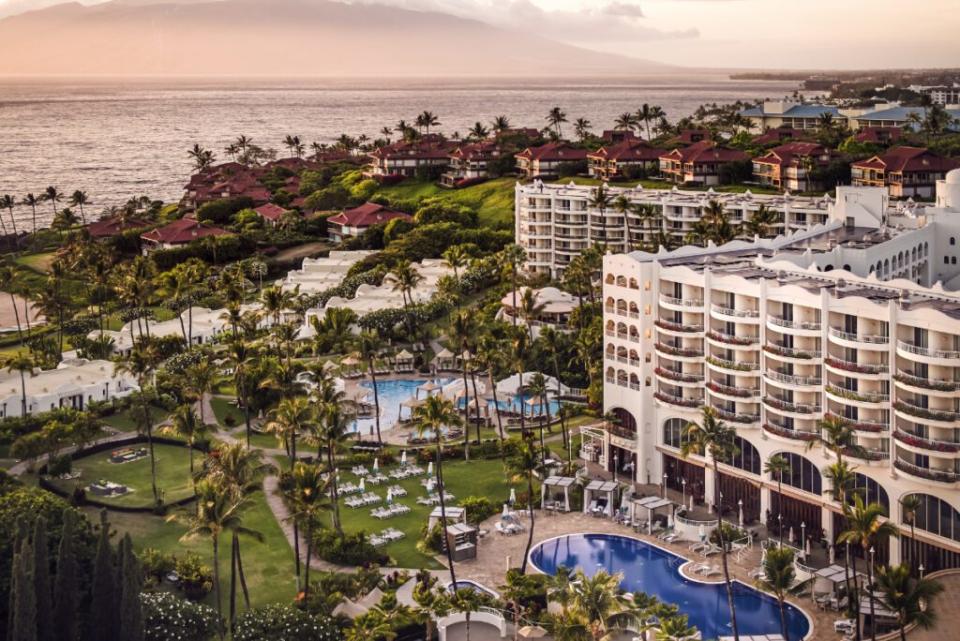Fairmont Revamps the Luxury Hotel Brand’s Strategy for New Era

For a brand around since 1907, Fairmont Hotels and Resorts has suddenly had a lot of activity. In January, parent company Accor installed new Fairmont CEO Mark Willis, who has been leading a rethink of the brand’s strategy. Some of the details about strategy changes will be revealed later this month at a conference with the general managers at the brand’s 86 hotels.
The Fairmont changes are part of a broader reorganization at Accor, giving each of its luxury and lifestyle brands dedicated full-time management.
“We’ve realized that managing them by geography doesn’t work,” Jean-Jacques Morin, Accor’s group deputy CEO, said last month at the Skift Future of Lodging Forum in London. Morin said the new model is based on how luxury behemoth LVMH lets each of its brands run semi-independent fiefdoms, or maisons.
The new Fairmont CEO said he already sees a shift.
“We’ve been very surprised how the market has taken that [October reorganization] announcement from the perspective of the real-estate owner who has a current asset and is looking for an operator,” Willis said. “If you’re active in the field [of branded hotel development], it’s not often that you get surprised. But I’ve got to say, we’ve had a lot of people reach out to us interested in becoming acquainted with Fairmont.”
Fairmont already has a strong pipeline heading into the shift. It has about 30 properties worldwide under development, with most expected to open in the next three years. The new locations are in popular spots, such as Orlando, Phoenix, and San Diego in the U.S.; Dubai in the UAE; and in Hanoi, Vietnam; Bangkok, Thailand, and Agra, India.
But gaps remain on the map.
“We’re looking for partners in key destinations and cities,” Willis said. “We don’t have a hotel in Paris. We’re not present in Berlin or Jeddah. Miami would be key for us, and so would Las Vegas, as examples. We’re wrapping up an analysis globally of where our competitors sit, where we are, and where we need to be.”
Fine-Tuning the Marketing
Updating the century-old, U.S.-born brand’s positioning to adapt to the current era is key task for the management team, which is now split between a headquarters in Dubai and a large office in Toronto — with input from Paris.
“Our most recent marketing was on the emotional side and inspirational side rather than the old-school way of doing campaigns, which would be going and directly showcasing the product,” said Yigit Sezgin, chief commercial officer of Fairmont, supporting an emerging idea of emotion being a new brand standard.
On the theory that “communities are the future of brands,” Fairmont tapped Codec, a brand consultancy, to research the tribes of travelers that like Fairmont. It’s also been doing “awareness and engagement benchmarking” with BVA BDRC (originally Business Development Research Consultants).
Travelsify is another company Fairmont has been working with to gather insights on traveler experience with luxury brands. It has given Fairmont access to data from affluent travelers who’ve made multiple stays throughout the year with a mix of luxury brands. Fairmont will use these insights — and those from their engagement with BVA BDRC, Codec, and other exploratory work — to inform its brand repositioning exercise.
Fairmont worked with Jean-Guilhem Lamberti, Accor’s global chief creative officer, to create “Grand by Nature,” a monograph co-authored by Claire Wrathall and Claire-Marie Angelini-Thiennot. The 300-page book has 500 visuals that sum up Fairmont’s beginnings, aesthetics, and values, with a partial goal of helping ensure the brand’s story is reflected in new properties far from its North American origins.
Destiny Derailed
In 2015, Accor acquired Fairmont along with luxury brand Raffles and premium brand Swissôtel in an $840 million deal.
“Since the transaction, they lost some of the luster from the original Fairmont,” said Scott Berman, who spent three decades at the hospitality and leisure consulting practice at one of the four largest accounting and consulting firms.
“Accor is well led, and I commend them for recognizing that there is a secret sauce to Fairmont that needs to be reinvigorated,” Berman said. “As an owner, it’s about which brand will generate the most juice. And it’s been it’s a more difficult conversation when you have had the parent company Accor being distracted as a group by running budget and other non-luxury hotels worldwide.”
“The new focus should be beneficial,” Berman said. “When you look at Fairmont’s footprint, it has products in so many key destinations that someone like me wants to visit. Sometimes it has some of the best-situated and most interesting assets in those places.”
Similarly, a report from analysts at Goldman Sachs this month called out Accor’s new focus on luxury and lifestyle with dedicated management teams as a foundation for significant opportunities for growth.
Yet not everyone is fully persuaded by Accor’s broader split.
“Having two types of reporting, two thematics, and two very different ways to develop, manage and distribute is a real issue, in our view,” said Deutsche Bank research analyst Andre Juillard last month.
As a refresher: In October, Accor’s management split the company into two groups — a move it has been defending and partly explaining to investors. One unit focuses on “luxury and lifestyle,” including the Fairmont brand. Separately Accor created a division for its “premium, midscale, and economy” brands.
“These two organizations will have to survive together, which might not be so easy, as they may have opposite interests on occasion,” Juillard wrote. “Accor’s governance will have to be clarified so as to be sure that each entity will benefit from the same kind of attention/allocation, and that efficiency synergies put in place throughout the past three years will remain. It is also important that the different teams continue to work together for Accor and not only for their own division – a key interest of Accor’s shareholders.”
Fairmont CEO Willis touts the change. He had previously been CEO India, Middle East, Africa & Turkey, with roughly 500 hotels in the portfolio and pipeline across a couple of dozen brands.
“In short, I would sit at a 10 o’clock meeting with an Ibis owner running a property with a $75-an-hour nightly rate, and then an hour later sit with a Fairmont owner with a typically $1,500-a-night rate in their market and a totally different set of needs,” Willis said. “Now Fairmont is fully carved out with a full management team in place that thinks about Fairmont nonstop. We expect to unleash tremendous growth potential for the brand.”
Get breaking travel news and exclusive hotel, airline, and tourism research and insights at Skift.com.

 Yahoo Finance
Yahoo Finance 
